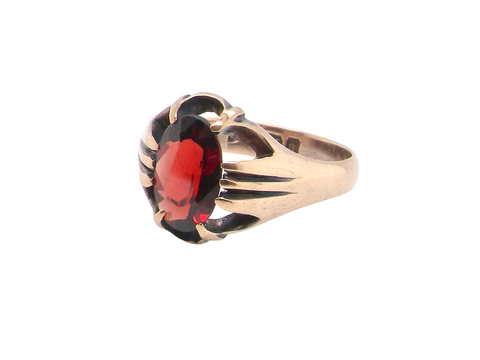Gemstones are one of the most popular choices for jewellery, and they are also valuable investments. The value of a gemstone is determined by its rarity, beauty, and quality. If you are interested in gemstones, you might want to know how to identify them and determine their value. In this article, we will guide you through the process of identifying and valuing gemstones.
Table of Contents
- What are Gemstones?
- Popular Types of Gemstones
- Diamond
- Ruby
- Sapphire
- Emerald
- Amethyst
- Aquamarine
- Garnet
- Topaz
- Tourmaline
- Opal
- Identifying Gemstones
- Color
- Clarity
- Cut
- Carat Weight
- Refractive Index
- Hardness
- Specific Gravity
- UV Fluorescence
- Magnification
- Valuing Gemstones
- Rarity
- Beauty
- Quality
- Certification
- Market Demand
- What are Gemstones?
Gemstones are minerals or rocks that are cut and polished to be used in jewellery or other decorative purposes. They are valued for their beauty, rarity, and durability. Gemstones can be found in different colours, shapes, and sizes. They can be transparent, translucent, or opaque.
- Popular Types of Gemstones
There are many types of gemstones, but some are more popular than others. Here are the top ten gemstones that are widely used in jewellery:
2.1 Diamond
Diamonds are the most popular gemstones in the world. They are prized for their exceptional brilliance and durability. They are the hardest substance on earth, and they are also the most expensive.
2.2 Ruby
Rubies are red gemstones that are also highly valued. They are known for their deep, rich colour and their rarity. Rubies are often associated with love and passion.
2.3 Sapphire
Sapphires are blue gemstones that are very popular. They are also found in other colours, such as pink and yellow. Sapphires are known for their hardness and durability.
2.4 Emerald
Emeralds are green gemstones that are highly prized. They are known for their rich colour and their rarity. Emeralds are often associated with growth and prosperity.
2.5 Amethyst
Amethysts are purple gemstones that are widely used in jewellery. They are known for their beauty and their affordability. Amethysts are often associated with calmness and clarity.
2.6 Aquamarine
Aquamarines are blue-green gemstones that are also very popular. They are known for their clarity and their association with the sea. Aquamarines are often used in jewellery that is meant to evoke a sense of peace and tranquillity.
2.7 Garnet
Garnets are red gemstones that are used in a variety of jewellery. They are known for their hardness and durability. Garnets are often associated with passion and energy.
2.8 Topaz
Topaz is a yellow gemstone that is also found in other colours, such as blue and pink. It is known for its hardness and its beauty. Topaz is often associated with strength and power.
2.9 Tourmaline
Tourmaline is a gemstone that comes in many different colours. It is known for its beauty and its affordability. Tourmaline is often associated with creativity and inspiration.
2.10 Opal
Opal is a gemstone that is known for its unique play of colours. It is often used in jewellery for its beauty and its versatility. Opal is often associated with imagination and creativity.
- Identifying Gemstones
Identifying gemstones can be a challenging task, but there are several factors that you can consider to help you determine what type of gemstone you are dealing with. Here are some of the most important factors to consider:
3.1 Color
The colour of a gemstone can be one of the most important factors in identifying it. Some gemstones are known for their distinct colour, such as the red of a ruby or the blue of a sapphire.
3.2 Clarity
The clarity of a gemstone refers to how clear it is. Some gemstones, such as diamonds, are prized for their clarity, while others, such as opals, are valued for their unique patterns and inclusions.
3.3 Cut
The cut of a gemstone refers to how it has been shaped and polished. Different types of gemstones are often cut in different ways to maximize their beauty and brilliance.
3.4 Carat Weight
The carat weight of a gemstone refers to its weight. This can be an important factor in determining its value, as larger gemstones are often more valuable.
3.5 Refractive Index
The refractive index of a gemstone refers to how much it bends light. This can be an important factor in identifying it, as different types of gemstones have different refractive indexes.
3.6 Hardness
The hardness of a gemstone refers to how resistant it is to scratching and other types of damage. This can be an important factor in identifying it, as different types of gemstones have different levels of hardness.
3.7 Specific Gravity
The specific gravity of a gemstone refers to how dense it is. This can be an important factor in identifying it, as different types of gemstones have different levels of density.
3.8 UV Fluorescence
The UV fluorescence of a gemstone refers to how it reacts to ultraviolet light. This can be an important factor in identifying it, as different types of gemstones have different levels of fluorescence.
3.9 Magnification
Magnifying a gemstone can reveal important details about its structure and composition. This can be an important factor in identifying it, as different types of gemstones have different patterns and inclusions.
- Valuing Gemstones
Valuing gemstones can be a complex process, as there are many factors to consider. Here are some of the most important factors to consider:
4.1 Rarity
The rarity of a gemstone can be an important factor in determining its value. Some gemstones, such as diamonds and rubies, are very rare and therefore very valuable.
4.2 Beauty
The beauty of a gemstone can also be an important factor in determining its value. Gemstones that are more brilliant, clear, and colourful are often more valuable.
4.3 Quality
The quality of a gemstone refers to its overall condition. Gemstones that are free from inclusions, scratches, and other types of damage are often more valuable.
4.4 Certification
Having a gemstone certified by a reputable gemological laboratory can add to its value, as it provides assurance that the gemstone is genuine and has been evaluated by experts.
4.5 Market Demand
The demand for a particular type of gemstone can also affect its value. Gemstones that are currently in high demand are often more valuable than those that are not.
- Conclusion
Identifying and valuing gemstones can be a complex process, but by considering factors such as color, clarity, cut, carat weight, refractive index, hardness, specific gravity, UV fluorescence, and magnification, you can make an informed assessment of what type of gemstone you have. Additionally, by taking into account factors such as rarity, beauty, quality, certification, and market demand, you can determine the value of the gemstone.
Whether you are buying or selling gemstones, it is important to work with a reputable dealer and to have the gemstone evaluated by a professional.
You may also like: A Brief History of Cocktail Rings



